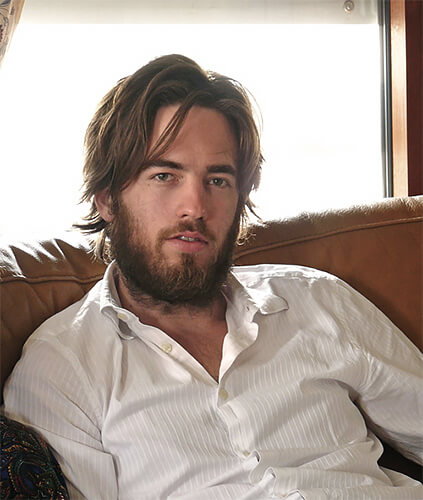Self-taught photographer, he discovers photography in China during a stay of several months in Beijing. He is captivated by the big metropolises there and by the variety of their architectures, their inhabitants, the way they tame the space and their personal stories. He has developed during 4 years an artistic series, Souvenir d'un Futur, on the elderly living in the large estates of the Paris region. The photographer intends to question us on the condition of seniors in these places in highlighting a sometimes neglected generation and in reestablishing the intergenerational links so important for the transmission of human values. He pushes forward another look on often underestimated suburban areas whose walls seem slowly get older and carry with them the memory of a modernist utopia.
EXHIBITIONS & ART FAIRS
Solo Exhibitions
September / October 2016 - Solo show, Galerie du Carré d'Art, Rennes, France
Group Exhibitions
November / December 2016 - Group show, Galerie Robert Doisneau, Nancy, France
July 2016 / September 2016 - Group show, Galerie Praz Delavallade, Paris, France
June 2016 / July 2016 - Athens Photo Festival, Benaki Museum, Athens, Greece
June 2016 / July 2016 - Raster Beton Festival, D21 Kunstraum, Leipzig
May 2016 - Photo London with LensCulture, Somerset House, United Kingdom
March / June 2016 - Circulation(s) Festival, emerging European photography
February / March 2016 - Exhibition at villa Noailles, commissioned work, la villa Reine Jeanne, Hyères, France
December 2015 / February 2016 - Bourse du Talent, Bibliothèque Nationale
Francois-Mitterrand, Paris, France
AWARDS & HONORS
2016 - Audience Award, Festival Circulations, winner
2016 - Athens Photo Festival, selected
2016 - LensCulture Exposure Awards, finalist
2015 - Circulation(s) Festival, selected
2015 - Bourse du Talent #64 landscape / space / architecture, winner
2015 - Arles 2015 Photo Folio Reviews, finalist
2015 - European Photography Magazine #98, theme urbanics, selected
SELECTED PUBLICATIONS, REVIEWS, INTERVIEWS
Video interviews
CNN International
LensCulture
Arte Metropolis
Festival Circulations & Louis-Lumière
Published
British Journal of Photography, Washington Post, The Guardian, CNN, European Photography, Aesthetica Magazine, Wired, Business Insider, Vice Creators Project, PBS News Hour, Slate, Wallpaper, Port Magazine, Suddeutsche Zeitung, Der Spiegel, Le Monde, L'Obs, L'Oeil de la Photographie, Zoom Magazine, D'Architectures, Lufthansa magazine, Huffington Post world, D-La Repubblica, Style Magazine-Corriere della Sera, Neon Magazine, France Culture Radio, Pagina 99, M&C Saatchi Little Stories, Feature Shoot, Wyborcza, Duzy Format, De Morgen , Divisare, Ignant, Konbini, Ilpost, Gestalten, Fisheye Magazine, Style Park, Artnet News, La Vanguardia, Archdaily, Fubiz, Radio Nova, GUP Magazine, Dazed & Confused , Esquire, Urbanautica and many more websites/blogs.
